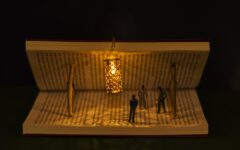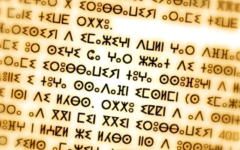The Image of the Addressee Accused in Ancient Arabic Rhetorical Texts: An Analysis of Speeches from the First Islamic Era
6 November 2024 2024-11-06 17:16The Image of the Addressee Accused in Ancient Arabic Rhetorical Texts: An Analysis of Speeches from the First Islamic Era

The Image of the Addressee Accused in Ancient Arabic Rhetorical Texts: An Analysis of Speeches from the First Islamic Era
This article explores how the addressee is portrayed in a particular genre of Arabic rhetoric, where the speaker focuses on holding the addressee accountable—essentially putting them “on trial” and making accusations. This dynamic creates a vivid image of the accused, enriched with unique artistic and semantic layers. As a result, these rhetorical texts move beyond rigid political discourse and traditional persuasive arguments, opening up new possibilities for understanding their literary value, which extends beyond mere historical or rhetorical analysis.
In the first section, we delve into the various ways the addressee is referenced and the meanings these references convey. We also identify the accusations made against the addressee, whether directly or indirectly. Additionally, we examine the techniques used to depict the addressee and convey their different statuses, shaping their literary image through both descriptive and narrative approaches. This process allows the addressee to take on symbolic meanings that may exceed the apparent intentions of the text, sometimes even contradicting them.
By employing this approach to study the image of the addressee in these ancient rhetorical texts, we open up new avenues for exploring both ancient and modern rhetoric, drawing on fresh perspectives from genres, semiotics, and linguistics.
Dr. Noura GRAYAA
Related Posts
Search
Categories
Popular Tags






